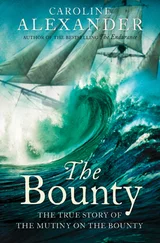Gindin is at the main board where the monitors and controls for the main engines as well as the fire and drain pumps are located. It is his normal posting. When the first collision occurs he is thrown violently across the compartment, where he smashes into a steel bulkhead.
This is a modern Soviet warship on his first rotation, but Potulniy and his officers know what they’re doing. They’ve trained for emergency situations. No one loses his head.
Gindin is back at the board, and between him and the captain they somehow manage to regain enough control to back away from the Silyni, get some sea room, and retrieve their crew, all without any serious injuries or loss of life.
For most of the crew the navy is a necessary evil of life in the Soviet Union. For many of the officers it’s just a rotten job that happens to pay well. But for Potulniy, who loves everything about the service and his position as captain, the accident is totally unacceptable. He has no one to blame except himself, and he knows that although sea duty aboard a Soviet warship, any warship, is by nature extremely hazardous, at times even deadly, Moscow does not reward failure of any kind, for any reason.
The Storozhevoy is ten days from Cuba, and Potulniy is in a tough spot. He can’t sail into Havana with a damaged ship. Nor can he call for help. His ship must be repaired. He must be repaired by the crew aboard with the materials at hand, no matter how impossible that might be, and he has to be repaired before they reach Cuba. So Potulniy turns to the one man aboard who shares his nearly holy zeal for the ship and the navy—Gindin.
“This is something I trained for,” Gindin says. He is in love with the navy and with his job and, most of all, with the Rodina. “I was going to fight capitalism if it got in our way. We were going to live better lives than our fathers and grandfathers, because they fought fearlessly to protect us and our country. It was up to us to continue the same traditions to make sure we continue to be the greatest, strongest, and most powerful country in the world. And I understood this almost from the beginning: Octebryata in first grade when we learned about Lenin; the Pioneers in grades four and five when we learned about the October Revolution and what it meant to the people; then the Komsomolez in the eighth grade where we learned more about Lenin and about Marx and Engels. Our education was neverending. Even now in the military it was up to our zampolits who made us understand what was expected of us.
“Serving our country was the most noble and honorable thing any Russian could do.”
So, when Captain Potulniy calls Gindin, his chief of the gas turbine section of BCH-5, to fix the damage, he naturally agrees. In fact, he completely agrees, because he well understands the fix that not only the captain is in but the entire ship.
Potulniy wants Gindin and his people to heat the deck plating at the rocket-loading hatch and pound it back into shape. Gindin has a hell of a time convincing the captain that such a fix is impossible at sea but has an idea that might work. The area of mangled deck is cut away with acetylene torches, the gaping wound is covered with plywood and canvas, and the entire patch is painted burgundy to match the rest of the deck.
But that’s the easy problem. The major damage done by the Silyni’s anchor is the huge gash on the starboard side of the hull, just aft of the bow but, thankfully, enough above the waterline that the pumps are taking care of the water that rushes in every time the ship plunges into a trough between waves.
Gindin is a packrat. Every time they are at home port at Baltisk or the Yantar Shipyard in Kaliningrad he hounds the port masters for spare parts, anything he can get his hands on; he even uses his supplies of spirt to bribe anyone who can help. Parts for the engines and the pumps, electrical wires and parts to repair the motors, nuts, bolts, screws, piping and joints, grease and lubricants, wire and cabling, even plywood and metal plating. Anything, in short, that will allow the Storozhevoy to be repaired at sea without having to call for help. That’s a lot of extra weight for a warship to carry.
A few months before they head out on this rotation, they’re still tied to the dock at Yantar when Potulniy calls Gindin off the ship down to the pier. The Storozhevoy’s waterline is nowhere to be seen. “Look what you’ve done with all the junk you’ve brought aboard. We’re never going to get out of here, let alone get back to base.”
“Captain, I think we’re getting ready for another rotation, which means six months at sea,” Gindin points out respectfully.
“That’s right, Boris.”
“Do you want to make it back on your own? Without asking for help, no matter what happens?”
“Of course.”
“Or maybe get towed back to base in shame?”
“Out of the question,” Potulniy fumes.
“Then, sir, I don’t see why our missing waterline should be a problem.”
Gindin is allowed to keep his junk, and ten days out of Cuba the stuff comes in handy.
The first problem is the electrical cable runs, which have been severed and partially ripped away from the inner hull. It’s no good trying to get at them from inside the hull; too much equipment and too many bulkheads would have to be cut away, and there’s no time for it. Gindin’s roommate, Senior Lieutenant Vladimir Firsov, who’s in charge of BCH-5’s electrical systems, will have to go over the side and do the job himself. If his lifeline doesn’t break, sending him into the sea, where there is virtually no chance of ever getting him back aboard, if the towering waves and motion of the ship don’t dash him against the hull, crushing the life out of him, and if the edges of the jagged tear don’t rip his body apart, he’s faced with the almost impossible task of identifying and splicing as many as one hundred electrical cables. But he’s a Soviet navy officer, filled with nearly the same zeal as Potulniy and Gindin. Firsov does the job, and when he’s hauled aboard three hours later, drenched with seawater and sweat, his body battered and bruised, every single circuit that he had spliced works.
“I would call it an extreme situation, and one tough job to do,” Gindin says. “But it was our duty, and no one looked at us like we were some kind of heroes.”
The storm calmed down, but the waves are still very high when Seaman Semyon Zaytsev, the ship’s best welder, is sent overboard to patch the hole with metal plates. Another seaman is sent overboard after him with a bucket of gray paint. “By the time the whole thing was done the ship looked like new. We spent a month in Cuba and no one ever noticed that we ever had any damage,” Gindin says. But this is the typical bond between Soviet sailors. You get into a tough situation, and you pull through, no matter what. “As simple as that,” Gindin says. “I’m still very proud of my crew for what they did that day, and how they did it.”
5. THE FINEST NAVY ON THE PLANET
In 1984 Tom Clancy published his first novel, The Hunt for Red October, very loosely based on an article about the Storozhevoy mutiny that appeared in Seapower Magazine and the master’s thesis of an officer at the Naval Postgraduate School in Monterey California. The Storozhevoy was an ASW frigate, while Red October was a new Typhoon-class ballistic missile submarine with a nearly silent propulsion system. Aboard the Storozhevoy a few of the officers and crew arrest the captain and stage a mutiny because they believe the Soviet system under Brezhnev is rotten. Aboard the Red October the captain and a few of his officers fool the crew into trying to defect to the West with the submarine because they believe that the Soviet system under Brezhnev is rotten and that with boats such as the Red October a global thermonuclear war is not only possible but likely. Clancy starts his story with the Red October sailing out of the submarine base at Polyarnyy, in the Arctic north, under the command of Captain First Rank Marko Ramius, on the sub’s maiden voyage. They are to test the sub’s silent drive against submarines of his own fleet and then return to base for an evaluation. If the submarine is as silent as his designers hope him to be, he will be able to sneak to within spitting distance of the U.S. coast and fire his nuclear missiles anytime he wants and there would be no warning. Millions of Americans would die, and a World War Three from which no one on the planet could survive would begin.
Читать дальше












